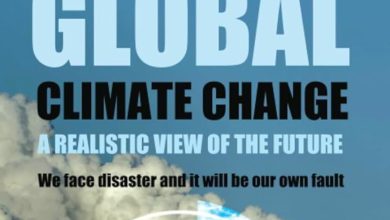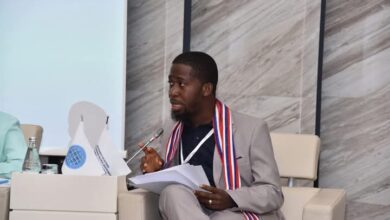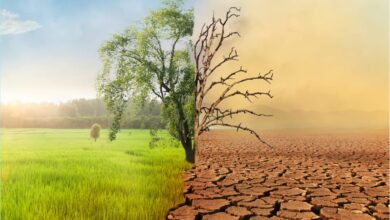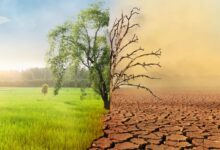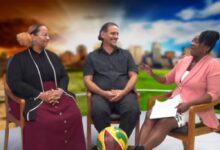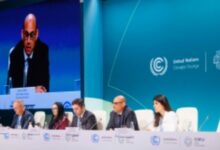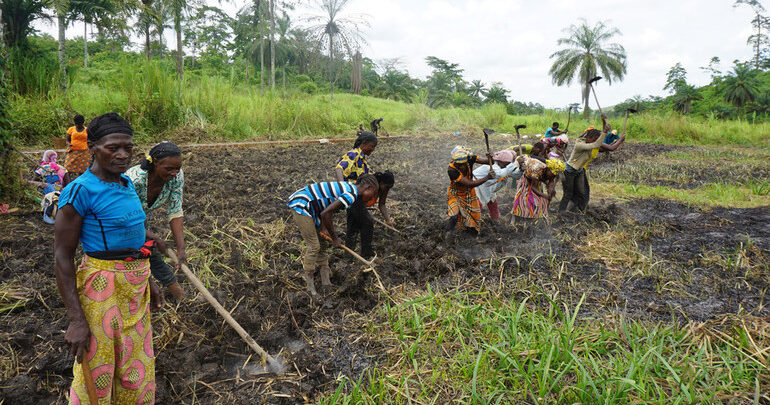
This piece was originally published via leading sustainability news outlet Business Green here.
As we approached the village of Lobeke on the shores of Lake Mai Ndombe we saw a crowd gathering. By the time we landed, there were hundreds of people. Half were excited children singing a traditional song about a little bird who had no nest and got wet when it rained. But they had changed the lyrics: “We used to study under palms and often got all wet; but Wildlife Works then built a school and now we are all set.”
Indeed, there is some good news coming out of the Congo Basin. I heard similar refrains throughout my three-day tour through Mai Ndombe province in the Democratic Republic of Congo (DRC) where ERA Congo – Wildlife Works Carbon (WWC) is implementing a forest conservation project. Large swathes of the world’s second largest remaining tropical forest are being protected. Moreover, the people that depend on it are getting access to health, education, food security, and sustainable livelihoods. Rare wildlife is returning. That is happening in the DRC, a country that has seen its share of problems, is remarkable.
“Old men sit in the shade because they planted a tree many years before.” (Ugandan proverb)
There’s little debate anymore that tropical forests must be protected. Deforestation and forest degradation are the second leading causes of global warming, responsible for about 15% of greenhouse gas emissions. Although deforestation rates are lower in the DRC than in other regions, in part because of unrest scaring off settlers and investors, the drivers of deforestation are revving up. Almost half a million hectares are now lost each year, with rates doubling since 1990. To limit the global temperature rise to 1.5 degrees, emissions from deforestation must decrease by 70-90% – so the DRC has a crucial role to play.
At the UN’s recent COP 26, over 140 world leaders promised to end deforestation by 2030, pledging over $19 billion to do so. However, while this is promising, it is not clear how the funds will be used or how countries will achieve the goal. Fortunately, there are proven models that can make this happen.
Reducing Emissions from Deforestation and forest Degradation (REDD+) may be the most effective. Put in place by the UN Framework Convention on Climate Change in 2005, it works by giving financial value to emission reductions from avoided deforestation. It addresses not just climate, but also biodiversity, livelihoods, the rights of indigenous peoples, and effective funding. The logic is simple: since the primary drivers of deforestation are economic, the solutions must also be economic.
REDD+ is being successfully used at dozens of tropical forest conservation projects worldwide since it has proven to be replicable and scalable and can raise substantial funding from corporations which buy carbon credits to meet their unavoidable emission reduction targets. It depends on detailed, science-based carbon accounting under the internationally recognized Verified Carbon Standard, and the buy-in via Free Prior and Informed Consent (FPIC) of local communities. As Wildlife Works founder Mike Korchinsky emphasizes, “It isn’t practical to wait for the world to become enlightened enough to leave the forests and elephants alone. REDD+ puts a practical value on standing forests to give communities an economic alternative to deforestation.”
“The forest is our home; when we leave the forest or if the forest dies, we shall die. We are the people of the forest.” (Pygmy elder)
Stopping deforestation does not happen in government offices. Developers must work on the ground, addressing deforestation where it is happening, tree by tree. The DRC has facilitated this by developing a national REDD+ program that encourages private developers to initiate voluntary projects. The project of Wildlife Works’ subsidiary ERA Congo in Mai Ndombe, which covers some 300,000 hectares and is home to about 180,000 people, is a good example.
Operational since 2011, it has attracted substantial private sector resources through the sale of carbon credits. It uses them to stop or redirect the activities that drive forest and biodiversity loss, reaching about 50,000 people so far. The results are encouraging. Deforestation in the area has declined, avoiding over 13 million tons of CO2 emissions, and many deforested areas have been replanted. The work is comprehensive and frequently audited. To gage progress, 12 forestry experts camp in the forest, monitoring 400 sample plots and measuring trees to calculate how much carbon they store based on their biomass. This is then extrapolated to the entire project area.
“Let him speak who has seen with his eyes.” Congolese proverb
Local communities receive 25% of the proceeds, while the government collects taxes of $0.50 a hectare per year or $132,600 annually, regardless of the level of carbon credit sales, which it splits with local governments. Thereafter, Wildlife Works covers all the operational costs of the project and then splits the remaining benefits with the national and provincial governments. In 2021, for the first time, the project will be profitable, thanks to the growth in corporate demand for carbon credits.
Mai Ndombe governor Jackson Mbo Mbaka proved very appreciative of the project when we visited him at the end of our tour. Bemoaning the quality of local infrastructure, he said, “We are very grateful for the great work Wildlife Works is doing. It proves that the best mechanism for stopping deforestation is through the private sector.” Such engagement, from the governor on down, coupled with transparent benefit sharing, is convincing local communities that it is in their economic interest not to cut down their forests. Guy Kajemba, who heads the DRC’s Climate and REDD Civil Society Working Group, told me that benefit sharing is crucial. “For civil society, REDD+ projects must compensate people for their efforts to protect the forest, and the 30 civil society groups in the province recognize that the Mai Ndombe project is doing that.”
“Instruction in youth is like engraving in stone.” (Congolese proverb)
Most of the people I spoke with emphasized that education is their top priority, and that the government has few resources to meet their needs. WWC is compensating by building schools in most villages, with twelve completed so far. The need is urgent since some schools are nothing more than a series of palm leaf huts. The principal of one of these in Loombe, which houses about 200 students, explained to me, “When it rains – which happens about two days a week – the kids have to be sent home, which holds them back”. Teachers in the new schools, on the other hand, confirmed that national test results improved markedly when students stopped missing classes.
However, the problems don’t end there. In most villages there are teachers who are not getting paid. Lobeke school principal Ebongo complained that “some of us have not been paid for nine years because the government requires solid school buildings and is slow to process paperwork, but I continue to teach for the sake of the children. Luckily Wildlife Works started paying our salaries and advocating for us with the government. Our children will now have a better future.” Principal Nsa Bile from neighboring Bokebene had a similar story, adding that, “Wildlife Works is not just paying us but raising the consciousness about the importance of education.” Good examples count: Ebongo was aware that Bokebene was a step ahead of his town, since WWC had already finished a school there after the community supplied the required rocks and sand.
“We desire to bequeath two things to our children. The first one is roots; the other one is wings.” (Sudanese proverb)
In fact, with enough projects in a village or in neighboring villages a virtuous cycle can start whereby residents get increasingly engaged by seeing results on the ground. A great motivator is supplying school uniforms, which are required, although most children can barely afford rags. The Batwa Pygmies, who are poor even by local standards, adapted a song for this. When we visited their village Ikita, we were met by about 200 kids singing in exquisite harmony that, “We welcome you our visitors, to tell you school is good; but some cannot participate, because they are too poor.” Village chief Basado Boot’Ombala, a rare woman chief, appreciates the recognition for her often exploited and disdained people. “The rights of the Batwa have not been taken seriously. The Wildlife Works project is giving us an opportunity to express ourselves and to follow the development path of the Bantu peoples. We hope this equal treatment will continue.”
While requiring uniforms in destitute villages may seem absurd, the desire to get one is yet another reason kids are eager to go to school. When WWC staff handed them out at a school in Ibali it felt like Christmas. The uniforms were the first piece of new clothing most had ever owned. Such motivation in countries that have nearly given up hope is a key ingredient of development success. Mbokolo-Nkando, a former brewery worker who had returned to his village of Kesenge, told me, ”Before the arrival of Wildlife Works, the young people did not want to farm. Now, after seeing what it is accomplishing with improved varieties of manioc, tomatoes, and onions, they have learned how to work and have initiative and hope.”
“Words are sweet but cannot take the place of food.” (African proverb)
Increasing food production in a country where the population has more than quadrupled in 50 years to over 90 million is crucial. However, traditional practices such as slash and burn agriculture, along with charcoal making, cause deforestation. If improved farming methods and other income sources are not found, the forests of Mai Ndombe and the DRC are doomed.
Much depends on changing the attitudes of those that depend on them, who have such pressing needs that they care more about survival than climate change or carbon sinks. The solution is to show them that there are viable economic alternatives to cutting down trees. One strategy is to promote higher yielding crops they can grow on already degraded land in their villages, such as manioc, their staple whose yields can increase tenfold, as well as tomatoes and onions, and to protect them from hungry goats with fences. Another is to encourage the planting of fruit and plantain trees, and oil palms. This is working. Silla Basabola-Ndebo, chief of Mbwenzey for 47 years, told me that, “In the beginning it was hard for us to understand or care about climate change. However, from Wildlife Works we learned that there are alternatives to clearing land if we use new seeds and plant closer to our village. Aside from selling the surplus, it’s also easier since we don’t have to go deep into the forest to farm.”
WWC is also promoting other income sources, such as honey production in the Pygmy village, a traditional pursuit, and fish farming. It has built six ponds in Loombe with both local and commercial species and is planning for many more. This will provide an important protein source with little environmental impact, as well as revenues from sales on local markets, for which WWC will provide transportation.
“When you educate a man, you educate an individual; when you educate a woman, you educate a generation.” (African proverb)
Improving farming methods is also empowering women. In the village of Nselenge we were welcomed by a powerful chorus of young men who had altered a song of praise for ex-dictator Mobutu, “Mobutu will never fall”, to say, “Wildlife Works will never fall”. They may have their hands full if their women also start raising their voices. Mbowale, who leads the local women’s cooperative founded by WWC and its farming projects, told me that, “these crops allow us to better feed our children, improving their health. And since the yields are far higher, we can sell the surplus and make an income that is not controlled by our men.” Such initiatives, along with education, should eventually turn the demographic tide, despite the lack of effective family planning programs in the region.
Chief Issesi of Loombe, who is 81, may represent the old guard. He did not seem overly concerned that his village of 50 had grown to about 800 in 20 years or that women were having upwards of five children. He was cautioned, however by Jean-Robert Bwangoy, the head of the ERA Congo – WWC Mai Ndombe project, himself a higher-ranking regional chief, that he was not to allow more people to move to Loombe.
Bwangoy, who holds a PhD in Geospatial Science from South Dakota State University, is a good example of what local people can accomplish when given the chance. Although he had a head start, coming from a prominent family, he grew up much like those I met. To give back to his community he conceived the ERA Congo project in 2008 when the government suspended 91 of the 156 logging contracts in the province because of corruption. He brought in Mike Korchinsky, the pioneering founder of Wildlife Works, and started using REDD+ to roll back deforestation.
“Health is like the sun that illuminates the entire village.” (African proverb)
Education is only one of several needs in Mai Ndombe. Like many of the forested parts of the country, the province lacks just about everything, from schools and hospitals to roads and airports, to electricity and running water. Proof comes quickly: our small plane had a flat tire when we landed on the ancient runway of Inongo, the capital, and we needed a four wheel-drive vehicle to navigate the seas of mud on the way to the project headquarters.
Such infrastructure gaps are not just inconvenient, they are a matter of life and death. On awakening in Loombe, we saw a group of people around the house behind our camp, mourning an 18-year-old woman who had died unexpectedly in childbirth a couple of days earlier. And I heard other stories of people drowning in the unpredictable lake trying to get to a hospital, or from diseases that could not be diagnosed without a local clinic.
While some people have been saved by using the medical evacuation service across the lake put in place by WWC, it is building health centers in at least five villages for more immediate care. We visited one that was nearly completed in Ibali. Chief Nkonsango Ndala, who dressed in traditional red garb to meet us, was particularly enthusiastic about WWC’s help, which includes vegetable gardens and a borehole supplying fresh water. He said, “the hospital and clean water will greatly improve health in our village, and we are looking forward to getting a new school soon. We also appreciate that WWC is committed for the long term, not like some groups who just donate individual items, like our old broken water pump, and then leave.”
Anne Bokutu Bolekoka, a mother of four in the village of Kesenge, summed it up: “Before the REDD+ project, when I or my children got sick far away from a large city, we were at great risk. Now we can visit the Wildlife Works-funded clinic in Inongo or get treated by the mobile clinic.”
“If you want to go fast go alone, if you want to go far go together.” (African proverb)
Community trust and engagement is essential for the success and sustainability of REDD+ projects, including Mai Ndombe. To build engagement, WWC has hired over 400 local people to participate in the project so they can acquire marketable skills. In fact, local job creation is one of its core conservation strategies. The proof is, once again, on the ground. The local development committees that request projects have the option each year of not renewing them, but none have done so. In fact, demand is growing almost exponentially as word spreads about the services that WWC is supplying. Daddy Nkoy, a former English teacher who did not get paid for eight years told me, “Getting a job with Wildlife Works as an interpreter has been the best thing that happened in my life. I have been able to build a house and can support my extended family. I’m paying school fees for some and bought sewing machines for my two deaf sisters so they can support themselves.”.
“When you shoot a Zebra in the white stripe, the black stripe dies too.” (South African proverb)
Restoring biodiversity is another priority, with rangers tracking wildlife and capturing it – and its poachers – on camera. Empathy helps. On a previous visit, Bruno Ilonga, the project manager, said: “I commiserate with the poachers about how hard their jobs are, and then we hire them and retrain them as conservationists.” The results speak for themselves. Animal species not seen in years are returning. Since the start of the project, the elephant population has gone from zero to around 100, and the population of bonobos, the great ape species closest to man, has increased. Recently, there have even been sightings of pangolins, which had been wiped out.
“A leader who does not take advice is not a leader.” (Kenyan proverb)
Beyond the direct impact of REDD+ projects on forests and communities, they also increase the awareness of all stakeholders on the importance of forest preservation. As they continue to mature, they can create a virtuous and reinforcing cycle to lessen climate change through the cooperation of governments, corporations, and forest communities. As VERRA, the NGO that certifies the emission reductions for the Mai Ndombe project, states, “Governments are best placed to create enabling environments and the right incentives on the ground for forest protection. For their part, developers of REDD+ projects tend to be nimbler and more effective at delivering services to local actors, including communities, and addressing local drivers of deforestation.” Mai Ndombe Territorial Commissioner Moliere Bonzoko confirmed this to me in Selenge, saying, “I am very happy to have the help of Wildlife Works. It’s a kind of public private partnership wherein the government works hand-in-hand with the private sector.”
“Tomorrow belongs to the people who prepare for it today.” (African proverb)
The DRC is at a crossroads. It is the largest country in sub-Saharan Africa and has exceptional natural resources, including minerals such as cobalt and copper, hydropower potential, significant arable land, and immense biodiversity. Nonetheless, it regularly finishes near the bottom in the UN’s global human development index, and about two thirds of Congolese live in poverty. So there is tremendous pressure to exploit natural resources, from the poor depending on them to survive, to the government looking for tax revenues, to international firms feeding their supply chains.
Since most of the resources are found in the forests, the solutions must also be found there. They must be practical, scalable, and easy to implement, and they will only be successful if they can protect the forests while meeting the economic needs of those who might cut them down. Several days of speaking with those most concerned, from forest dwellers to government officials, have convinced me that REDD+ is a viable mechanism and that the Wildlife Works project in Mai Ndombe is showing the way in the Congo Basin.
“The earth is not ours; it is a treasure we hold in trust for future generations.” Namibian proverb
Oliver Griffith is an international communications and economics professional with 35 years’ experience working in and writing about international affairs, especially Africa – as a US diplomat, World Bank Group (IFC) official and, since 2016, as advisor for the Africa50 infrastructure fund. He served in Rwanda and the Central African Republic and was the US State Department’s Desk Officer for Tanzania, Madagascar, Mauritius, Comoros, and Seychelles.
https://www.reddimpact.com/articles/climate-change-solution-congo

